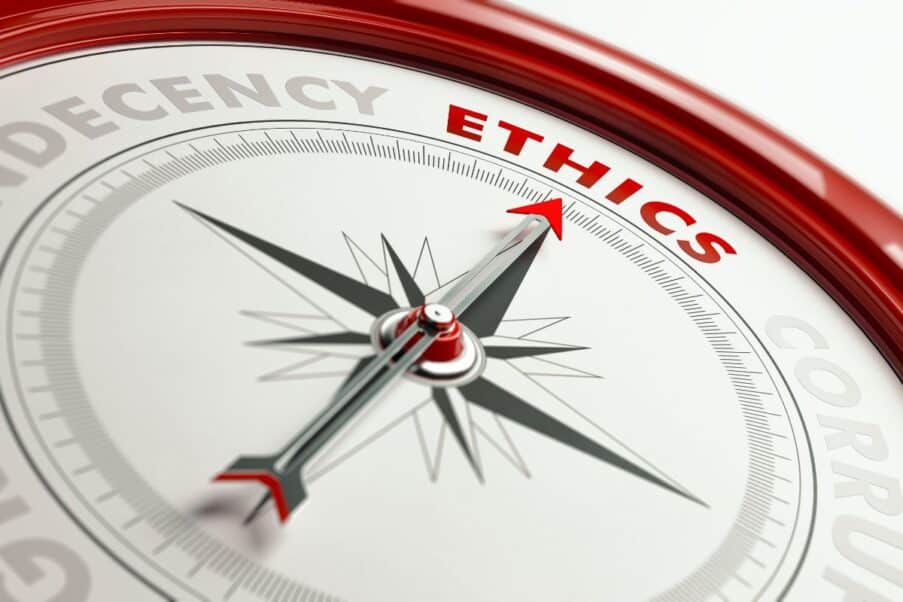Growth Through Business Licensing: SPIDERfit Kids Case Study
Business Licensing: What it is, how to do it and what it can mean for you business, your impact and overall growth.

Our company was nearly broke.
My business partner and I had been coaching youth fitness and athletic performance programs for more than a decade. In the early 2000’s it was starting to become clear that kids’ needs were changing in regard to physical development.
The data had been compiling and we had seen it with our own eyes. Kids were becoming less physically active. The result was a drastic change in physical coordination and fitness that was making the standard youth programming practices we had used for years nearly irrelevant for the kids we served.
Speaking to other fitness professionals, coaches and physical education teachers, our observations weren’t unique.
It became clear that something needed to change with how fitness mentors approached programming, particularly with kids prior to puberty.
Being physically active early in life is critical for developing physical skills that allow kids to become physically confident and competent for the rest of their lives. A term coined outside of the United States as “physical literacy”.
The concept of physical literacy struck a chord with my business partner and I, so we started to learn more about it. We started to share what we were learning and applying.
After seeing a wide interest and need for physical literacy education, we decided to start SPIDERfit Kids. Our mission was to provide the education and resources for fitness mentors to inspire kids to become happy, healthy, “physically literate” adults.
We wrote weekly blogs, shared videos of the programs in action, and shared our unique methods from the stage at industry events. We created our first course, as well as a follow up field guide.
These were slowly selling one by one. Unfortunately, the basic costs of our small business were eating up any profit from these trickling sales. We didn’t have the marketing money, experience, or power to create the adequate sales volume necessary within our small niche.
Then the phone rang.
The director of coach education from a large National Governing Body (NGB) for a popular youth sport was on the other end of the line. He shared that he had become a fan of what we were doing, following us on social media and being a member of our weekly newsletter.
“How could we make your resources available to all the coaches in our organization?”
I wasn’t sure I’d heard him correctly.
“All your coaches?” I asked, “how many do you have?”
“Right now around 5,000, but we’re growing”. He replied.
It turns out they had received an education grant, and he wanted to use it to put SPIDERfit resources in all of his coaches hands. Not just the coaches they had now, but the ones that would be joining the organization in the future.
Additionally, he wanted to be able to put their organization’s branding on our materials. This way, the information and resources would be presented in a way that was congruent with their messaging.
I played it cool and let him know I’d get back to him with a proposal.
After I hung up and did a touchdown dance in a grocery store parking lot, I shared the request with my business partner. We were both excited to see how this huge opportunity could take our mission to the next level.
The problem was that we didn’t know how we’d do it. It was clear that this wasn’t just a typical “one-off” transaction, so I spoke with an attorney friend of mine. He introduced the concept of “content licensing” to us.
If you have a unique idea, business operation, brand or anything else you can claim under trademark or copyright law, there are different ways you can allow others to brand and/or distribute these assets for a fee.
Licensing allows you to draft an agreement with another party that outlines how they can use a specific asset within your business, such as your logo, intellectual property or another asset you own.
For us, the NGB liked our copyrighted content and wanted to be able to distribute it with their branding. Essentially, they wanted our permission to use our stuff and make it look like it came from them. The time, cost, and number of personnel it would take for their organization to create similar resources would be substantial. Licensing our materials meant they could fast-track a new resource to distribute throughout their organization, nearly overnight.
We worked with my attorney friend to create an agreement that would allow for the branding and distribution of our most popular resource to an agreed-upon number of people throughout the NGB. We negotiated terms in which we could maintain co-branding on the cover of the materials in order to strengthen our own brand distribution and recognition.
Additionally, we offered an extension fee that included an added number of distributions each year. As long as the fee was paid annually, they could continue to brand and distribute to the agreed upon number of people.
When we presented the agreement, we were nervous. We were at a breaking point in our business. If everything worked well, it would be huge. If it didn’t, if we hadn’t structured the agreement appropriately, if we had missed some critical detail, it could be disastrous.
Luckily, it went off without a hitch. That NGB started referring us to others that wanted to brand and distribute our content as well. We learned that these organizations were under growing pressure to produce a long-term youth development model that incorporated aspects of physical literacy. Soon we were adding resources to the license packages, and including training and other services as part of the deal.
Since then, I’ve licensed our content to about 20 different organizations within youth sports and physical activity, with SPIDERfit methodologies impacting well over 1 million kids and coaches.
I’ve never had to enforce any legal action, and I continue to have a great relationship with our licensees. My business costs associated with managing these licenses are minimal, and the continuity income provides a stable financial base for my operation.
If you are looking to scale the income and influence of your intellectual property, brand or other business asset, licensing may be an avenue to explore.
Below I share some key take-aways from my experience.
First and foremost, get a knowledgeable attorney to advise you. You may need a few different attorneys with different specialties.
It’s critically important to understand the different designations of agreements for letting other entities use your business property. Two of the primary agreements include franchising and licensing.
Franchising may be an option if you want to grow your brand by charging other entities to replicate your entire operation. This is a legally complex and rigid agreement that carries significant maintenance costs. It does, however, give the creator of the franchise a great deal of control over how their franchisees operate their business. There are various examples of gym franchises throughout the fitness industry.
Licensing is a simpler agreement based on the unique terms that are contracted between two parties. It’s often used for specific assets within a business, such as specific intellectual property, branding or similar. In our case, it was our copyrighted content.
While licensing is often a simpler legal and financial agreement, licensure has little to no control of the licensed asset outside of the agreed upon terms.
There are many stories within the fitness industry of businesses who improperly classified their agreement (license vs. franchise) and in turn, had to quickly modify their business model while paying six and seven figure fines. Consult with an expert!
It’s important to have a clear designation of ownership of the business asset you plan to share. This could be through a trademark, patent, copyright or other legal designation of ownership. An attorney who specializes in all or any of the above would be helpful.
In order to make your business asset attractive to others, it should solve a clear industry problem, preferably in a unique way. What is your business or brand doing well that other businesses struggle with? If they pay for the rights to license or franchise your business asset, how will it help them reach their goals faster and easier?
As I mentioned earlier, these governing bodies for youth sports were under pressure to produce a long-term development model for kids incorporating physical literacy. We had a “done for you” package they could license and begin to distribute almost immediately.
Build brand recognition behind your assets. People should recognize your brand and what you do. This requires creating and distributing quality content frequently. Every single one of our licensees had engaged with our brand through social media, speaking events and our newsletter. If people don’t know about what you have to offer, they won’t be interested in offering it either.
When it comes to pricing a license agreement, there’s no “perfect” model. Most licensures will underprice their first offering, as we did. You live and learn though.
Consider:
The time, energy, and total costs involved with each license. License agreements should be a clear asset to your company, not a liability.
The estimated costs for organizations to create their own materials. Your “done for you” materials should be priced attractively compared to this number.
Any possible market competition that could arise from another entity distributing your assets. There are a variety of ways to account for this in an agreement, but if you plan to continue to distribute the materials you’re licensing, you should consider the cost of the loss of market share.
You may have other factors or concerns for your market that would impact the cost for a license. If possible, seek a mentor who has had experience with these types of agreements.
Make sure you have a means by which to monitor your agreement terms. Whether it’s the number of units distributed, a specific dollar amount of sales or royalties, or any other terms of your agreement, there needs to be a method of reliable accounting.
In order to maintain long term licensing relationships, continue to add value. We speak at industry events for some of our licensees, provide online trainings and frequently check in to offer support. These are all opportunities to share new offerings we may have as well. While not part of the agreement, these all add value and sustain the relationship.
Content licensing has been a positive and profitable way for me to scale my mission with SPIDERfit Kids.
If you have a unique, valuable, and easily replicable business or asset within your business, licensing or franchising may be an option for growth. Starting the process with a knowledgeable and experienced legal expert will provide the direction and clarity necessary to use these tools to maximize the impact of your mission.
Want to learn more? Dimensionalize Your Fitness Business
Brett Klika is an award-winning conditioning coach, motivational speaker, author, and Co-Founder of SPIDERfit Kids, a global innovator in youth fitness education. With over 20 years of experience creating youth and adult athletic performance programs, fitness DVDs, and other resources, Brett and SPIDERfit Kids have been able to educate, inspire, and certify thousands of youth coaches who positively impact millions of kids.
Brett has now expanded his international impact to include coaching for performance and productivity strategies for high performing adults with his Energy100 coaching program.
Follow Brett on Facebook and YouTube at Energy100 and Instagram @bklika
Brett Klika
Brett Klika is an IDEA Personal Trainer of the Year, motivational speaker, author and co-founder of SPIDERfit Kids, a global innovator in youth fitness education. With over 20 years of experience creating youth fitness programs, fitness DVDs, and other resources for various industry and consumer organizations, Brett continues to bring his knowledge and practical experience with the “power of play” to fitness educators around the world. His best-selling book, 7 Minutes to Fit, has been translated into three different languages and has inspired busy families from all corners of the globe to make health part of their hectic lives.





